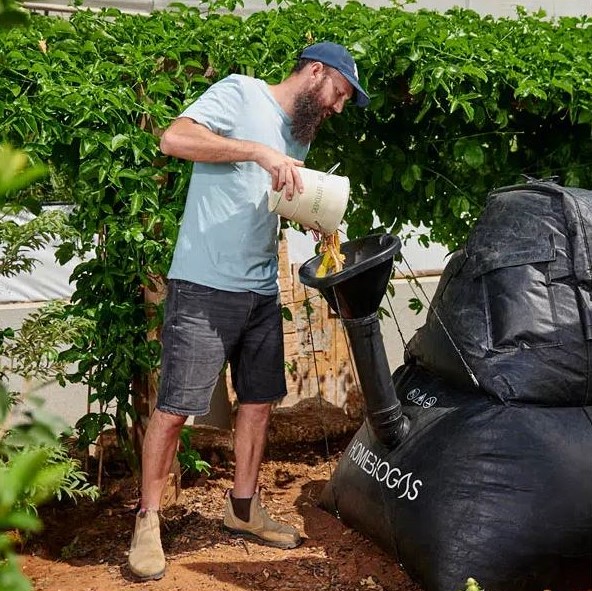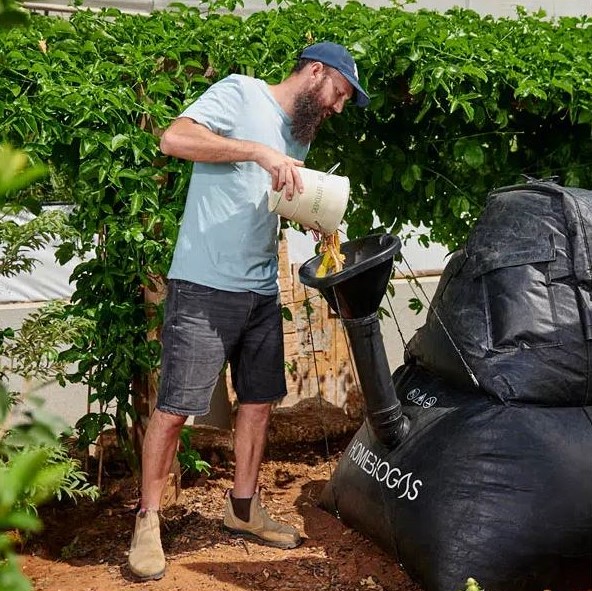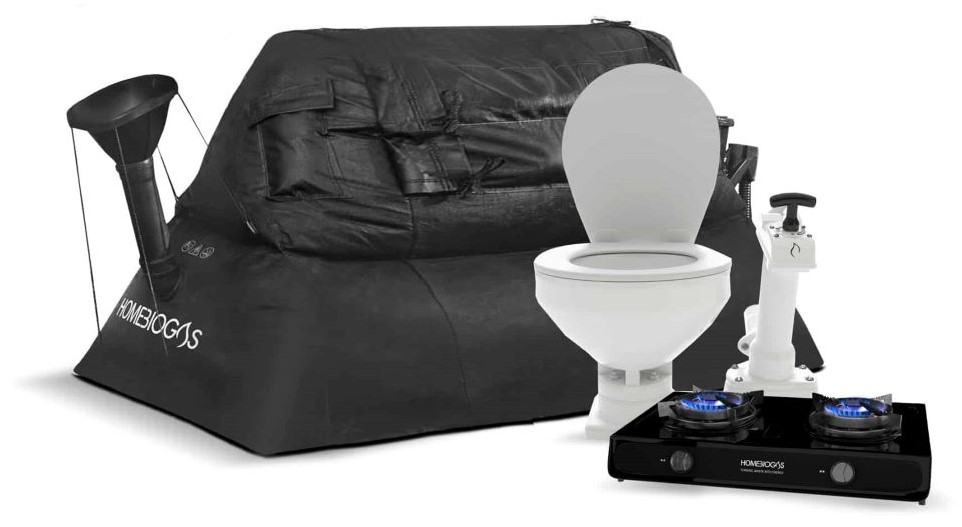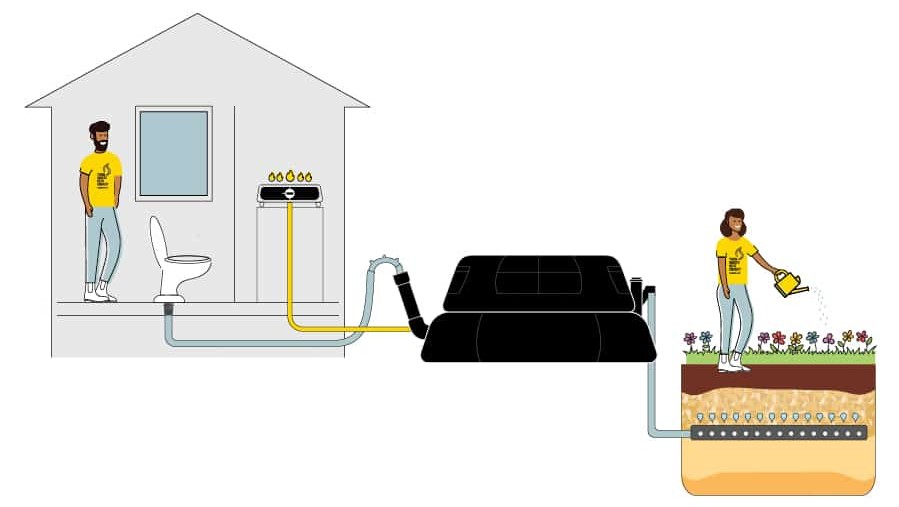
Home Biogas Digesters Turn Waste Into Green Energy
Many of us pay to have our organic waste removed, but home biogas digesters offer households a way to produce clean fuel and liquid fertilizer with it. Digesters naturally create biogas as organic matter breaks down, and home digester systems make it possible to cook with it.
There are now a few home biogas digesters on the market, and some handy households are going the DIY route. The only downside is that residential biogas digesters are best in a warm climate unless they are located indoors in a heated space because they shouldn’t get below a certain temperature.
What Is a Home Biogas Digester?
As organic matter breaks down, it produces biogas, which is mostly methane and carbon dioxide. Biogas digesters use methanogenic bacteria in an anaerobic environment to help process the waste. These units contain an inlet for kitchen scraps, animal manure, and human waste and an outlet for the biogas and liquid fertilizer.
They have a positive environmental impact because they eliminate the greenhouse gas emissions these waste items would create in landfills. In places where people use wood and open flames for cooking, they can conserve trees. Also, when used for human waste, these digesters can save water because they use much less water than flushing a toilet does.
One of the leading home biogas digester manufacturers is HomeBiogas, a company based in Israel. Households, schools, businesses, and nonprofit organizations use its digesters, which require no electricity to operate.

The HomeBiogas 2:
- Costs $975 and includes a biogas stove, gas pipe, gas filter, an inlet, and combined fertilizer and gas outlets
- Produces up to 2 hours of biogas daily and tens of liters of liquid fertilizer monthly
- Can handle up to 1.5 gallons of waste daily
- Designed to last 15 years and is made of 100% recyclable materials
- Needs an average day/night temperature of at least 68 degrees Fahrenheit (20 degrees Celsius)
“For more than ten years, we have worked hard to promote our vision of a world without waste, investing long hours and resources on research and development, operating in more than 100 countries on 6 continents to make our waste-to-energy systems available worldwide”, said Oshik Efrati, CEO of HomeBiogas. “Our systems offer an efficient solution to dealing with two of the world’s biggest challenges: waste management and climate change.”

How Does a Home Biogas Digester Work?
These units contain an inlet, outlet, and digestion chamber with methanogenic bacteria. The waste is submerged in water, creating an anaerobic or oxygen-free environment.
HomeBiogas digesters need a 2 by 3-meter flat area in a sunny location. Activation requires cow manure and water; it takes 1 to 4 weeks to establish the bacteria colony. You’ll know it’s ready when it’s creating flammable gas. However, this process only needs to be done once before the unit is prepared to process waste. Unlike a compost pile, all food scraps are suitable, including cooked foods, meats, and fats.
Gas accumulates, gets purified, and flows into the gas bag in a closed-loop system. These units work best in environments that do not regularly get below 50 F (10 C), so, unfortunately, they are not suitable for many areas of the globe unless they are indoors. The HomeBiogas website features its system’s use across the world, including India, Israel, Liberia, Kenya, Ecuador, Belize, Laos, Nepal, the U.S., and Australia.
In addition, home biogas digesters are safe indoors and supposedly don’t produce an odor if operating correctly. But some kits might not be designed for indoor use. HomeBiogas digesters, for example, are intended for outdoor use only because they should be located in a sunny location.

How Can I Get a Digester for My Home?
If you live in a suitable climate and want to start making your own biogas and liquid fertilizer, you can either buy a biogas digester kit with everything you need or go the DIY route. Solar CITIES has a useful how-to video that uses an international bulk container (IBC), sewer pipes, uniseals, and a PVC bag.
[embedded content]
If you generate a sufficient amount of organic waste and want to take home waste reduction to the next level, a home biogas digester might be an excellent idea. These units are like a large stomach that breaks down waste into cooking fuel and fertilizer. If you make use of these outputs, a digester could save you money. For example, the HomeBiogas units, which include a burner for cooking, can create two hours of cooking fuel daily. There are kits available like the ones from HomeBiogas or a variety of DIY options for getting started.